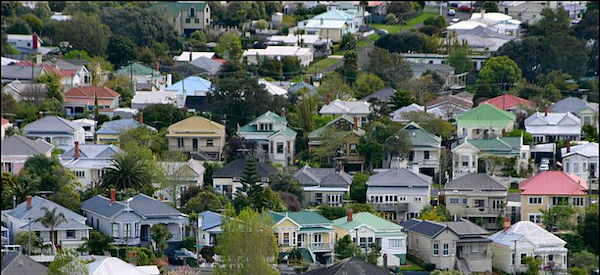News
Don’t Eat Your Money
he biggest expense for a young family is the cost of housing. Rent and mortgage payments are fixed costs which can only be reduced by moving to a cheaper house, so when it comes to saving money we need to look at the next biggest expense, and that is the weekly shopping bill.

The biggest expense for a young family is the cost of housing. Rent and mortgage payments are fixed costs which can only be reduced by moving to a cheaper house, so when it comes to saving money we need to look at the next biggest expense, and that is the weekly shopping bill. There is a wide range of food spending patterns depending on household income, the number and ages of family members, people’s eating habits and expectations about the standard of food they like to eat. Whereas some people expect to dine on roast lamb and salmon, others are quite happy living on mince and sausages. Because there is so much variation, food is a prime area for finding ways to cut back and save. One of the easiest ways to do this is to shop as infrequently as possible with, say, a big fortnightly shop of non-perishables supplemented by more frequent purchases of fresh food. It is important to buy the right kinds of food as well as spending the right amount.
Every year, the University of Otago publishes a Food Cost Survey which is available at otago.ac.nz. Click on the consultancy section and then food costs. This survey calculates the weekly cost of purchasing a healthy diet for men, women, adolescents and children in major cities and looks at basic, moderate and liberal budgets. It’s no surprise that food costs for a teenage boy are around $107 per week compared to $85 for a grown man! A moderate budget for a couple and two children under the age of five living in Auckland is around $255 per week. For a couple with two teenagers the cost is around $359 per week. Use this guide to set a strict budget for your food, so you don’t eat your money!
Articles
The 2016 New Zealand Architecture Awards announced
The 2016 New Zealand Architecture Awards were announced at an event in Wellington on Friday 11 November.
Twenty-eight buildings and structures have won honours in the leading architectural awards programme, which recognises the best work across all the types of projects designed by New Zealand’s architects.

The 2016 New Zealand Architecture Awards were announced at an event in Wellington on Friday 11 November.
Twenty-eight buildings and structures have won honours in the leading architectural awards programme, which recognises the best work across all the types of projects designed by New Zealand’s architects.
The awards jury, led by Christchurch architect Jasper van der Lingen and comprising Auckland architects Megan Edwards and Michael O’Sullivan, and Melbourne-based architect Andrew Maynard, visited 50 shortlisted buildings from the Bay of Islands to Central Otago.
Four of the winning projects received special acknowledgement in the form of awards named for outstanding New Zealand architects.
The John Scott Award for Public Architecture has gone to Auckland’s neon-pink LightPath / Canada Street Bridge, designed by Monk MacKenzie together with GHD, Landlab and Novare Design.
“The LightPath and Canada Street Bridge are fun as well as functional,” the jury said. “It’s a surprising and uplifting project that sends a message that Auckland is becoming a people-centred city.”
The Ted McCoy Award for Education was presented to Te Kura Kaupapa Māori o Ngāti Kahungununu o Te Wairoa, a small Māori school in Wairoa, northern Hawkes Bay, designed by RTA Studio.
“This is an exemplary case of architecture helping to make a difference,” the jury said. “The school’s architecture sends a message to its students that their community values them and has high expectations of them.”
The Sir Ian Athfield Award for Housing went to Wellington multi-unit development Zavos Corner, designed by Parsonson Architects.
“Zavos Corner would be a great project at any time, but is especially welcome when the country is in such need of high quality, medium-density rental housing,” the jury said. “The architect and client should be congratulated for fighting so hard to realise this project.”
The Sir Miles Warren Award for Commercial Architecture went to Annandale Farm, a group of holiday houses designed by Patterson Associates for a coastal property on Banks Peninsula.
“A highly accomplished trio of buildings – Olive Grove, Scrubby Bay and Seascape – show how architecture can complement and enhance a setting of great natural beauty,” the jury said.
Jasper van der Lingen said the Architecture Awards jury visited projects ranging from house additions to churches, schools and office buildings. Award-winning buildings included a new bus station, a suburban library and a restored war memorial.
“All of the award-winners are highly impressive projects,” van der Lingen said. “They go above competence to reach excellence. They set the benchmark for architectural achievement in New Zealand.”
The LightPath / Canada Street Bridge received its New Zealand Architecture Award in the Planning and Urban Design category. In this project, the jury said, “a redundant section of motorway has been artfully combined with an elegant new bridge to produce an inspiring piece of urban design with enormous public appeal.” The jury said “the stretch of cycleway and walkway signals, with its pink path and coloured lighting, the profound changes that are beginning to occur in Auckland’s transport planning.”
In the Awards public architecture category two projects were recognised – the Christchurch Bus Interchange–Whakawhitinga Pahi and Te Pātaka Kōrero o Te Hau Kapua–Devonport Library.
The Bus Interchange, designed by Architectus, is the first Christchurch anchor project to be completed and, the jury said, “sets an excellent precedent in its provision of a high quality public facility.”
In Auckland Devonport Library, designed by Athfield Architects, has quickly become a valued community asset. The jury said the library’s “generous and engaging spaces, and its combination of relaxed ambience and busy occupation, lend it an admirable vitality.”
The Awards commercial category features, besides Annandale Farm, a factory in the Waikato and a ‘wellness’ retreat in Otago.
Jasmax’s APL Factory in Hamilton is a spacious, light-filled working environment that is already an architectural landmark. They jury said the factory’s “long roadside elevation is a fine addition to the streetscape and wider urban scene.”
Aro Hā Wellness Retreat is a Glenorchy eco-resort designed by Tennent Brown Architects to be as sustainable as possible in terms of energy use and food production. The jury praised the reference in the buildings’ sculpted forms to the mountainous landscape around Lake Wakitipu.
Another business-oriented project to win a New Zealand Architecture Award, in the hospitality and retail category, was Fortieth & Hurstmere, an arcade of cafés and restaurants in Takapuna on Auckland’s north shore designed by McKinney + Windeatt Architects.
“From nothing, the architect has produced a result that’s quite something” the jury said of a project “that saw an unprepossessing building excavated to yield a lively internal laneway that brings depth and diversity to a shopping centre surrounded by carparking and traffic.”
Besides Te Kura Kaupapa Māori o Ngāti Kahungununu o Te Wairoa there was one other winner in the Awards’ education category – St Cuthbert’s College Centennial Centre for Wellbeing, in Epsom, Auckland, designed by Architectus.
“The Centennial Centre provides St Cuthbert’s with one of the country’s best swimming pools in a venue that encourages both elite performance and enjoyable participation,” the jury said.
The Architecture Awards housing categories included nine winners. Zavos Corner won its New Zealand Architecture Award in the Multi-unit category, as did the Mary Potter Apartments in St Albans, Christchurch, designed by Warren and Mahoney Architects.
“The 12 Mary Potter market-rental units for elderly residents have been integrated into an existing community housing project in a manner, the jury said, “shows deep respect for the social mission of the client and the needs of residents.”
Six new standalone houses received New Zealand Architecture Awards. The most northerly of these houses is the Fold House at Waipiro Bay in the Bay of Islands, designed by Bossley Architects. Nestled into its beautiful maritime site the house is, the jury said, “generous, calm, and superbly detailed, and offers a lovely, relaxed progression of spaces.”
E-Type House, in Grey Lynn, Auckland, was designed by Richard Naish of RTA Studio for his own family. Interconnected communal and private spaces are arranged around two north-facing courtyards in a house that, the jury said, “tips its hat to the neighbourhood’s prevailing villa typology, while allowing for a relaxed progress through a long and narrow site.”
Bramasole is a house on flat farmland at Waimauku, west Auckland, designed by Herbst Architects. “This is a graceful and elegant house,” the jury said. “The detailing is excellent, the entry is intriguing and the whole composition is beguiling. The architects have demonstrated a very high level of proficiency.”
Herbst Architects also won a New Zealand Architecture Award for the K Valley House, sited in countryside near Thames. Recycled materials and fittings have been used extensively in the building. “The commitment to a rural idiom is clearly signalled by the rusted corrugated iron sheets on the exterior,” the jury said. “Inside, it is clear that this is a sophisticated piece of work, as comfortable as a cosy retreat should be, and as confident as an inspiring site demands.
Tom’s House near Queenstown, which was designed by Anna-Marie Chin Architects is, the jury said, “a very clever piece of work that meets the needs and relatively modest budget of the client while challenging the design rules and constraints of an upmarket residential estate.” The form of the house is inspired by the traditional shed, but the jury noted that the architect “has twisted the type with an asymmetrical gable that creates dynamic elevations that relate to the local mountain landscape.”
In the Wanaka House by Lovell and O’Connell Architects “a strong, protective roof is anchored to a wall in a manner reminiscent of the bivouac shelters pitched by the region’s pioneering settlers.” The jury said the house is inventive and contemporary, “but its design and strong, simple material palette acknowledges New Zealand’s 1970s architectural tradition”.
The jury gave one award on the Housing–additions category, to the Belmont Garden Room designed by Mitchell & Stout Architects and Rachel Dodd. This “clever, artful and frugal extension” to a small state house on Auckland’s North Shore has “liberated the house and, presumably, its youngest occupants,” the jury said. “The influences are well-chosen: mid-century New Zealand timber modernism and Japanese design.”
Two projects, both designed by Jasmax, received awards in the Interior category. New Zealand Post House in Wellington, is a “concrete brute of a building that has been revitalised with quirky pods and ‘village green’ kiosks, and an internal street through the ground floor that is a welcome alternative thoroughfare to windblown Waterloo Quay.”
In Christchurch, Jasmax’s 141 Cambridge Terrace–Lane Neave Building is a “light-filled, naturally ventilated and highly legible building in which an elegant material palette complements the building’s exposed structure,” the jury said. “The intended effect, which has been achieved admirably, is an energised, purposeful and healthy workplace.”
Zavos Corner, Parsonson Architects’ Wellington multi-unit development, received an Interior award to go along with its Housing award. “The tenanted apartments are a pleasure to inhabit,” the jury said. “The planning is excellent, modest materials and finishes are imaginatively deployed, and each unit benefits from generous and well-framed views out to the street and into an interior courtyard.”
The restoration of two significant historic sites received acknowledgement in the Heritage category. In Wellington, Studio of Pacific Architecture “showed a deep appreciation of Gummer and Ford’s Carillon and Hall of Memories in the impressive remediation and restoration of these national treasures,” the jury said. “The Carillon has been future-proofed as one of New Zealand’s finest musical instruments, and the Hall of Memories respected as one of country’s most profound contemplative spaces.”
At Manutuke, near Gisborne, “a decade and a half of thorough research, extensive consultation, determined fundraising and careful construction have resulted in the inspiring revitalisation by Architects 44 of one of New Zealand’s most important Māori churches – Toko Toru Tapu Church.” The jury noted the history of Toko Toru Tapu Church dates back to 1839, and the existing building is more than a hundred years old. “This history has been acknowledged and honoured in a restoration project which has rendered the church safe, secure and fit for purpose, while restoring original features and components.”
Three projects received awards in the Small Project category. The jury said Cardrona Hut, near Wanaka, designed by RTA Studio, is “a delightful little building that is both an accomplished exercise in sufficiency and an evocative and immediately appealing piece of domestic architecture.” The jury said the little building “suggests a back country tramping hut, although its detailing and level of design deliver a rather more bespoke architectural experience.”
On Waiheke Island, Number 5, by Architectus, is “a well-considered and sympathetic addition to a site with two existing buildings that also gives definition to a sheltered courtyard.” The jury said the “the language of the addition is simple, the materials robust, and the planning clear.”
The Studio and Garden Room–Peters House in Pakuranga, designed by Lynda Simmons Architect reimagines the traditionally sterile relationship in Auckland suburbia of house, front yard and street. “The dominance of the car and default resort to a banal patch of lawn have given way to an engaging and sophisticated addition designed in concert with a mounded garden,” the jury said.
Two awards were made in the Enduring Architecture category, which acknowledges buildings of at least 25 years of age which continue to perform valuable service.
The late Sir Ian Athfield began designing and building the New Zealand Settlement Company – Awaroa House for his family in 1972. The bach on Tasman Bay “is a place no visitor wants to leave,” the awards jury said. “It is an enchanting and relaxed holiday house, utterly without pretension, and beautifully fit for its sociable purpose. It is a magical place in a wonderful setting.”
St Andrew’s Church (1960) at Le Bon’s Bay, Banks Peninsula, designed by the practice of Hendry and Mitchener, is “a beautiful little church striking in its sufficiency and the rigour of its design.” The jury said the church “has a sophisticated modesty, a quality which speaks not just of a simpler and perhaps more architecturally coherent time, but also of its architect’s principled renunciation of excess and clear focus on design essentials.”
The New Zealand Architecture Awards is a programme operated by the New Zealand Institute of Architects with the support of Resene, which has sponsored the Architecture Awards programme for 25 years.
Contact:
John Walsh, Communications Manager, New Zealand Institute of Architects
[email protected]; 021 276 7447
Michael Barrett, Communications Adviser, New Zealand Institute of Architects
[email protected]; 021 884 458
2016 New Zealand Architecture Awards: list of winners
Named Awards
John Scott Award for Public Architecture
LightPath / Canada Street Bridge, Auckland, by Monk MacKenzie together with GHD, Landlab and Novare Design
Sir Miles Warren Award for Commercial Architecture
Annandale Farm, Banks Peninsula, by Patterson Associates
Ted McCoy Award for Education
Te Kura Kaupapa Māori o Ngāti Kahungununu o Te Wairoa, by RTA Studio
Sir Ian Athfield Award for Housing
Zavos Corner, Wellington, by Parsonson Architects
New Zealand Architecture Awards by category
Commercial Architecture
Annandale Farm, Banks Peninsula by Patterson Associates
Aro Hā Retreat, Glenorchy, by Tennent Brown Architects
The APL Factory – “Lifting the Veil”, Te Rapa, Hamilton, by Jasmax
Education
St Cuthbert’s College Centennial Centre for Wellbeing, Epsom, Auckland, by Architectus and Architecture HDT in association
Te Kura Kaupapa Māori o Ngāti Kahungununu o Te Wairoa, Wairoa, by RTA Studio
Enduring Architecture
New Zealand Settlement Company – Awaroa House, Takaka, by Sir Ian Athfield
St Andrew’s Church (1960), Le Bons Bay, Banks Peninsula, by Hendry and Mitchener
Heritage
National War Memorial Projects [Carillon and Hall of Memories], Wellington, by Studio of Pacific Architecture
Toko Toru Tapu Church, Manutuke, Gisborne, by Architects 44
Hospitality & Retail
Fortieth & Hurstmere, Takapuna, by McKinney + Windeatt Architects
Housing
Bramasole, Waimauku, by Herbst Architects
E-Type House, Grey Lynn, Auckland, by RTA Studio
Fold House, Waipiro Bay, Bay of Islands, by Bossley Architects
K Valley House, Thames, by Herbst Architects
Tom’s House, Queenstown, by Anna-Marie Chin Architects
The Wanaka House, by Lovell and O’Connell Architects
Housing – Alterations and Additions
Belmont Garden Room, by Mitchell & Stout Architects and Rachel Dodd in association
Housing – Multi-unit
Mary Potter Apartments, St Albans, Christchurch by Warren and Mahoney Architects
Zavos Corner, Mt Victoria, Wellington, by Parsonson Architects
Interior Architecture
New Zealand Post House, Waterloo Quay, Wellington, by Jasmax
141 Cambridge Terrace/Lane Neave, Christchurch, by Jasmax
Zavos Corner, Mt Victoria, Wellington, by Parsonson Architects
Planning and Urban Design
LightPathAKL/Canada Street Bridge, Auckland, by Monk Mackenzie with GHD, Novare and LandLAB in association
Public Architecture
Christchurch Bus Interchange/Whakawhitinga Pahi, by Architectus
Te Pātaka Kōrero o Te Hau Kapua – Devonport Library, by Athfield Architects
Small Project Architecture
Cardrona Hut, Wanaka, by RTA Studio
Number 5, Onetangi, Waiheke Island, by Architectus
Studio and Garden Room – Peters House, Pakuranga, Auckland, by Lynda Simmons – Architect
Download hi-res image gallery
Download low-res image gallery
Download PDF of Awards booklet
Download full Awards citations and photography credits
General
Growing Economy Increases Housing Demand
Auckland is New Zealand’s economic hub and with our economy set to continue to grow over the next couple of years demand for housing in Auckland will remain high. Property values in New Zealand have increased by more than 25 percent in 3 years and NZHerald also reports Auckland’s the median house has risen by 46.5% however there are investors buying Auckland residential property for less than market value.

Auckland is New Zealand’s economic hub and with our economy set to continue to grow over the next couple of years demand for housing in Auckland will remain high.
Property values in New Zealand have increased by more than 25 percent in 3 years and NZHerald also reports Auckland’s the median house has risen by 46.5% however there are investors buying Auckland residential property for less than market value.
For some investors in the Auckland property market the highly profitable property deals are apparently still out there. PropertyTutors mentoring clients have continued to buy residential property below market value in 2015. This month alone Lauren a new investor under the guidance of mentor Sean Wood bought two properties in 24 hours for less than the market price who would have thought it possible?
Also with demand for property at an all time high, investors like James and Elliot are managing to sell their properties whilst they’re still renovating them. This lowers the investor’s costs as there are no property marketing or listing fees.
Head of Trade Me Property Nigel Jeffries says the latest Property Price Index showed that while the average asking price in Auckland has risen by 20 per cent in the last year, small houses (1-2 bedrooms) had increased 24 per cent and apartments were up a “staggering” 49 per cent in a year.
Trade Me Sales Price Index
As long as our economy continues to grow, demand for Auckland housing in all its forms will be strong.
This blog article was written for PropertyBlogs by Mobilize Mail.
General
Nelson – Hot Location For Lifestyle
Baby boomers particularly those currently living in Auckland may be setting their sights on Nelson and who would blame them. Nelson offers the perfect lifestyle with a mediterranean climate, idyllic nature walks, sandy beaches, culinary delights and of course it’s one the cultural arts capitals of New Zealand too.

Baby boomers particularly those currently living in Auckland may be setting their sights on Nelson and who would blame them. Nelson offers the perfect lifestyle with a mediterranean climate, idyllic nature walks, sandy beaches, culinary delights and of course it’s one the cultural arts capitals of New Zealand too.
The house and land packages in Nelson are really too good to be true. Imagine selling your property in Auckland, capitalising on the high property values, and securing a better lifestyle in a brand new home (mortgage free) in one of the safest and friendliest places in the world! This was once a move only the wealthy could afford. Now it’s a reality for so many Aucklanders thanks to the buoyant property market.
The latest annual property sales report showed an increase in property values of 17 percent for Auckland. The average asking price for a property in Auckland starts at seven hundred and fifty thousand dollars, while in Nelson brand new home and land for sale deals start from two hundred and fifty thousand dollars.
Nelson is out of the spotlight and flying under the radar right now, but it may not last for much longer. The property market is on the move in this region with Trade Me Sales Price Index reporting property values up by over six percent during the last property sales season.
Aucklanders in their middle to late years of life will be questioning their current position. They will want to time their move so they can cash in their property equity to create a better lifestyle somewhere else; probably in New Zealand’s answer to the Med – Nelson!
This blog article was written for PropertyBlogs by Mobilize Mail.
-

 Management5 years ago
Management5 years agoHome Insulation Requirements
-

 Investment5 years ago
Investment5 years agoAnother date NZ property investors are dreading
-

 Accounting & Finance5 years ago
Accounting & Finance5 years agoLow Interest Rates Winners and Losers
-

 Build5 years ago
Build5 years agoHow to Choose and Purchase a Suitable Property to Subdivide
-

 Management6 years ago
Management6 years agoAttracting More Business Travellers To Your Auckland Airbnb Property
-

 Investment6 years ago
Investment6 years agoWould You Be a Landlord in 2018?
-

 Tenants6 years ago
Tenants6 years agoCoworking Countdown – 4 Things to Prepare Before You Move In
-

 Renovations6 years ago
Renovations6 years agoFive easy steps to boost the appeal of your home





